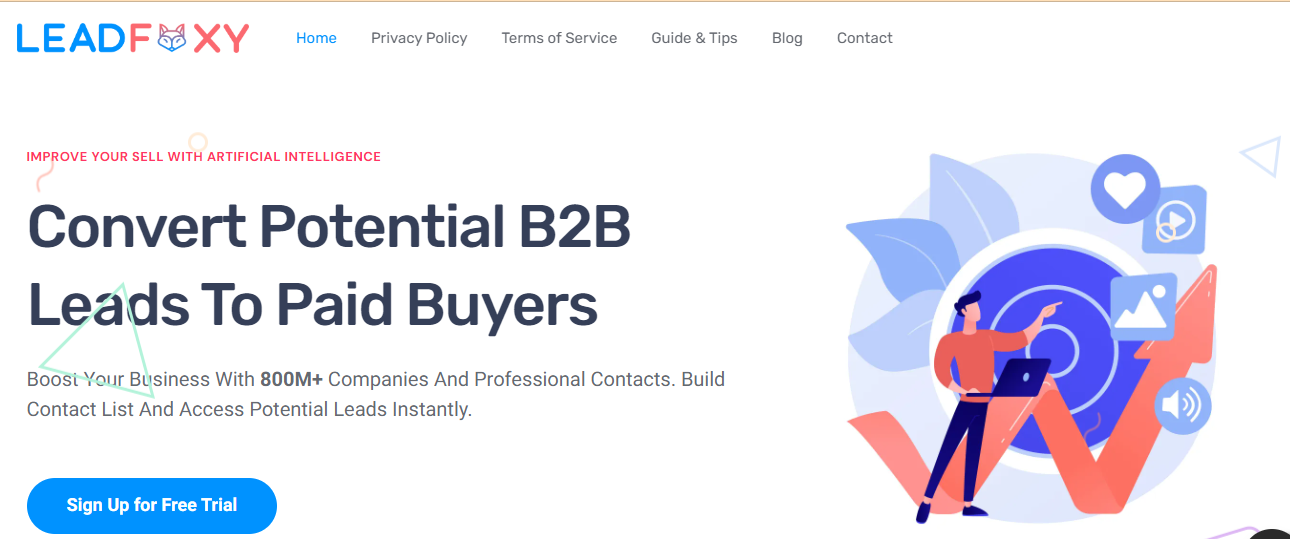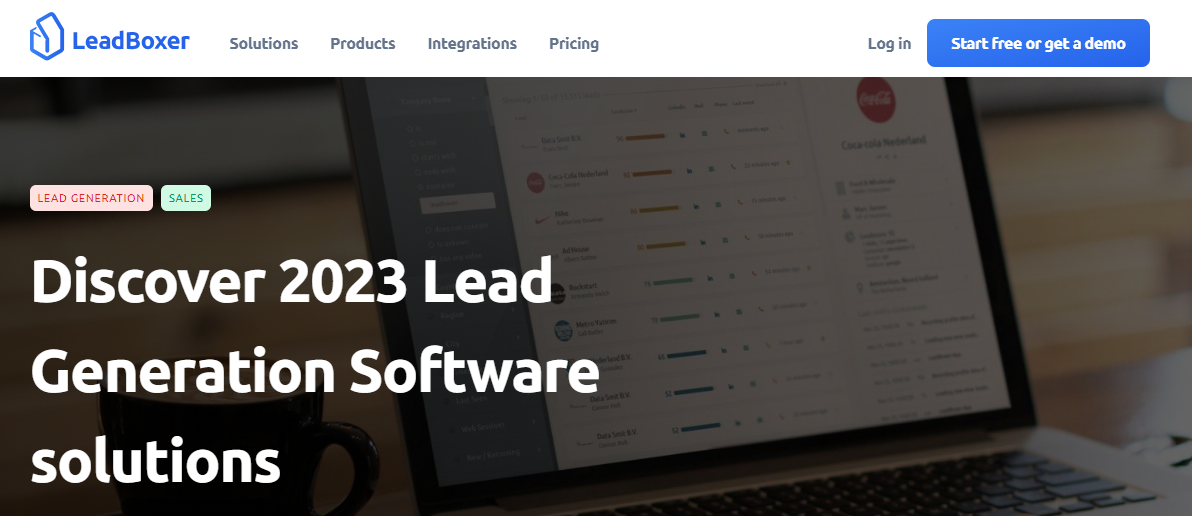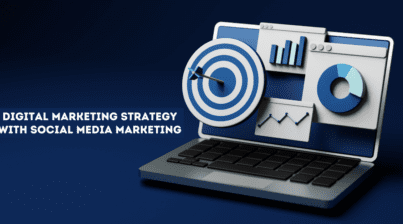Choosing the right lead generation tool can significantly impact the success of your business. In the vast field of lead generation software, two names often stand out – LeadFoxy and LeadBoxer. Both tools have a commendable track record in helping businesses attract, capture, and manage leads, but each one offers distinct features and functionalities that might cater more efficiently to different business needs.
In the article LeadFoxy Vs. LeadBoxer: Which Lead Generation Tool Fits Your Business Needs Better? We will provide in-depth insights into both tools, comparing their features, usability, and cost-effectiveness. We aim to equip you with vital information to make an informed choice about which tool would best complement your business’s lead generation strategy and drive your sales growth.
Whether you are new to the world of digital marketing or looking to switch to a tool more aligned with your objectives, this guide can provide a clear perspective.
What Is Lead Generation Tool?
Lead generation is an indispensable element in the marketing strategy of every business, irrespective of its size or industry. It involves the process of appealing to and transforming previously unfamiliar individuals and potential clients into those expressing interest in a company’s product or service.
Common examples of lead generators often comprise elements such as job applications, blog articles, special offers, live events, and various digital content. To optimize this process, numerous businesses employ lead generation tools. These tools, either in the form of software or services, are specifically designed to draw in potential customers and collect their contact details.
Lead generation tools can significantly enhance a business’s marketing and sales efforts since they help identify, attract, and convert potential clients while saving valuable time and resources. They make it easier for marketing professionals to capture, follow up, and nurture leads until they are ripe for conversion.
When comparing the two, LeadFoxy Vs. LeadBoxer, several considerations come into play. LeadFoxy is exceptionally user-friendly and has rich features that handle multiple lead generation aspects. LeadBoxer shines with its capacity to convert anonymous website visitors into identifiable leads, leading to potentially unexplored opportunities.
How Lead Generation Tool Work?
Lead generation tools work by identifying, attracting, and capturing the information of potential customers or clients interested in a business’s products or services. These tools are indispensable in making the marketing and sales operations of a business more efficient and organized. Their effectiveness largely depends on strategic planning and proper execution.
Here is a step-by-step guide on how they generally work:
- Identify the Target Audience: The first step is to identify who your potential customers are. The lead generation tool uses the parameters set by the business to zero in on a specific demographic. These parameters could include age, gender, location, interests, and more depending on the nature of the business.
- Attract Prospects: The tool then works to attract these potential leads through various methods. The tools could pique interest through various strategies such as search engine optimization, pay-per-click ads, social media campaigns, content marketing initiatives, or email marketing tactics. Depending on the tool’s capabilities, it may feature one or several of these methods.
- Capture information: Once leads are attracted, the tool offers a means for them to provide their contact information. This is often done in exchange for relevant content or valuable offerings, like eBooks, webinars, free trials, or discounts. This can take place through forms on a website, landing pages, or interactive pop-up widgets.
- Nurture Leads: Not every lead is prepared to make a purchase during their initial interaction with the business. A lead generation tool will nurture these leads by regularly engaging with them through targeted and personalized communication, generally via email. This often involves providing valuable content, encouraging interaction, or offering special promotions to keep the potential customer engaged.
- Qualify and Score Leads: These tools then qualify leads based on their engagement level or potential to convert into a customer. Lead scoring, an integral feature of many lead generation tools, helps prioritize the leads that are more likely to convert.
- Transfer Leads to Sales Team: Once leads are qualified and scored, they are then passed on to the sales team. The sales team then carries out further processes to convert those leads into customers.
- Tracking and Analysis: Lead generation tools also offer quantifiable data and analytics, enabling businesses to monitor the advancement of their lead generation approaches. They can use these insights to enhance and refine their marketing and sales efforts.
Lead generation tools streamline and automate the process of reaching out to potential customers, capturing their interest, and nurturing these leads, all while saving precious time and resources.
Importance Of Lead Generation
In today’s business landscape, lead generation holds significant importance for the prosperity and success of organizations. Regardless of the company’s size or area of specialization, an effective lead generation strategy often serves as the foundation upon which growth, expansion, and profitability are built.
Here are some reasons why lead generation is so important:
- Sustaining Business Growth: A constant and steady flow of customers is vital for any business to thrive and achieve success. Lead generation attracts potential customers who are interested in the company’s products or services, thereby serving as a source for continual business growth.
- Increasing Sales and Profit Ratio: More leads equate to more potential customers and ultimately, more opportunities to sell. An effective lead generation strategy helps in gathering quality leads, boosting the chances of converting them into buyers, thus increasing sales and profit margins.
- Targeting Desired Customers: Lead generation tools can be used to target prospects based on specific criteria such as geographic location, age, income level, and behaviors. This allowed businesses to focus their marketing efforts on a segment of the population most likely to buy their products or services, increasing efficiency and sustainability.
- Building Brand Awareness: Lead generation isn’t just about getting people to visit your website or getting them to buy your product, it also helps increase brand awareness. By drawing in potential customers with relevant and valuable content, businesses can educate leads about their brand and what they offer, thereby enhancing the likelihood that these leads will opt for their product or service when they’re prepared to make a purchase.
- Nurturing Prospective Customers: Most customers are not ready to buy upon their first interaction with a company. Hence, businesses need to cultivate relationships with prospects over time. Lead generation enables businesses to sustain communication with prospective customers, ensuring their brand stays top of mind and guiding them along the sales journey until they’re prepared to finalize a purchase.
- Cost-Efficiency: Lead generation—especially digital lead generation—can be a highly cost-effective marketing strategy. Unlike traditional advertising methods that broadcast to a broad audience, lead generation focuses on targeting specific individuals or enterprises, making it more efficient and less wasteful.
- Measurable Results: With the aid of lead generation tools, businesses can track the number of leads generated, percentage converted into customers, and how different marketing channels and strategies contribute to their lead generation efforts. Such metrics can help in fine-tuning marketing strategies with data-driven decisions.
Lead generation is critical for businesses as it facilitates growth by attracting prospects, fostering relationships, and propelling potential customers through the sales funnel. It fills the pipeline with qualified leads, thereby helping companies stay a step ahead in the intensively competitive business environment.
LeadFoxy: Streamlining Your Lead Generation Process

This tool puts the user at the forefront of its design, making it intuitive and easy to use.
It offers a diverse range of features ranging from personalized emails to a robust lead scoring system.
As a new customer, you are entitled to a 7-day premium free trial session using LeadFoxy.Give LeadFoxy a test run, and remember to use the code “Lead 20” for an added perk—a 20% discount.
LeadBoxer: A Comprehensive Lead Generation Suite

It provides an array of valuable features such as lead scoring, prospect tracking, and smart notifications.
But what sets LeadBoxer apart is its creative approach to automatic lead qualification: it scores leads based on their digital fingerprints.
What Sets Them Apart: A Study on LeadFoxy Vs. LeadBoxer
| Features/Properties | LeadFoxy | LeadBoxer |
| Target Users | Small to medium businesses, marketers, agencies | Small businesses, large enterprises, marketers |
| Platform Type | Lead management software | Lead generation & customer behavior data software |
| Lead Generation | Strong automation tools for generating leads through web forms or landing pages. | Powerful lead identification tools using tracking technology for anonymous website visitors. |
| Analytics & Reporting | Basic analytical and reporting tools, providing insights about lead behaviour and conversion rates. | Advanced analytics and reporting, offering insights into customer behavior, segmentation, and scoring for data-driven decision making. |
| Email Marketing | Robust email marketing tools with automation, including follow-ups, A/B testing, and performance tracking. | Does not primarily focus on email marketing but can integrate with other email marketing tools. |
| CRM Integration | Integrations with popular CRM tools, including Salesforce, Hubspot, and others. | Wide range of integrations with CRM tools, including Salesforce, Pipedrive, Microsoft Dynamics, and others. |
| Customer Targeting | Focuses on targeting customer based on demographic and behavioural data. | Uses lead scoring based on customer behavior and engagement on the site to target potential customers. |
| Customizability and flexibility | Provides customizable forms and landing pages to match your brand. | Offers customizable features and dashboard, allowing personalized interpretation of data as per business needs. |
| Price | Offers various payment options ranging from monthly, annual, and one-time payment. | Pricing is based on monthly subscription depending on features included. |
| Support | Provides online support, webinars, and documentation for its clients. | Offers online support, knowledge base, and video tutorials. |
| Free Trial | Offers a free trial. | Offers a free trial. |
| UI/UX | Simple and intuitive interface making it easy to use. | Advanced UI, might require some time to understand the functionalities. |
Final Thoughts: LeadFoxy Vs. LeadBoxer?
Both LeadFoxy and LeadBoxer are well-suited for businesses looking to amp up their lead generation efforts.
If a user-friendly interface and email personalization are your priorities, LeadFoxy might be a no-brainer for you.
But if lead scoring and detailed insight into your prospect’s activities are of utmost importance, you might find LeadBoxer to be the best fit.
Choose the lead generation tool that works best for you and watch your business reach new heights.
Whether you settle on LeadFoxy or LeadBoxer, we are confident that harnessing the power of lead generation software will lead your business to significant growth.




